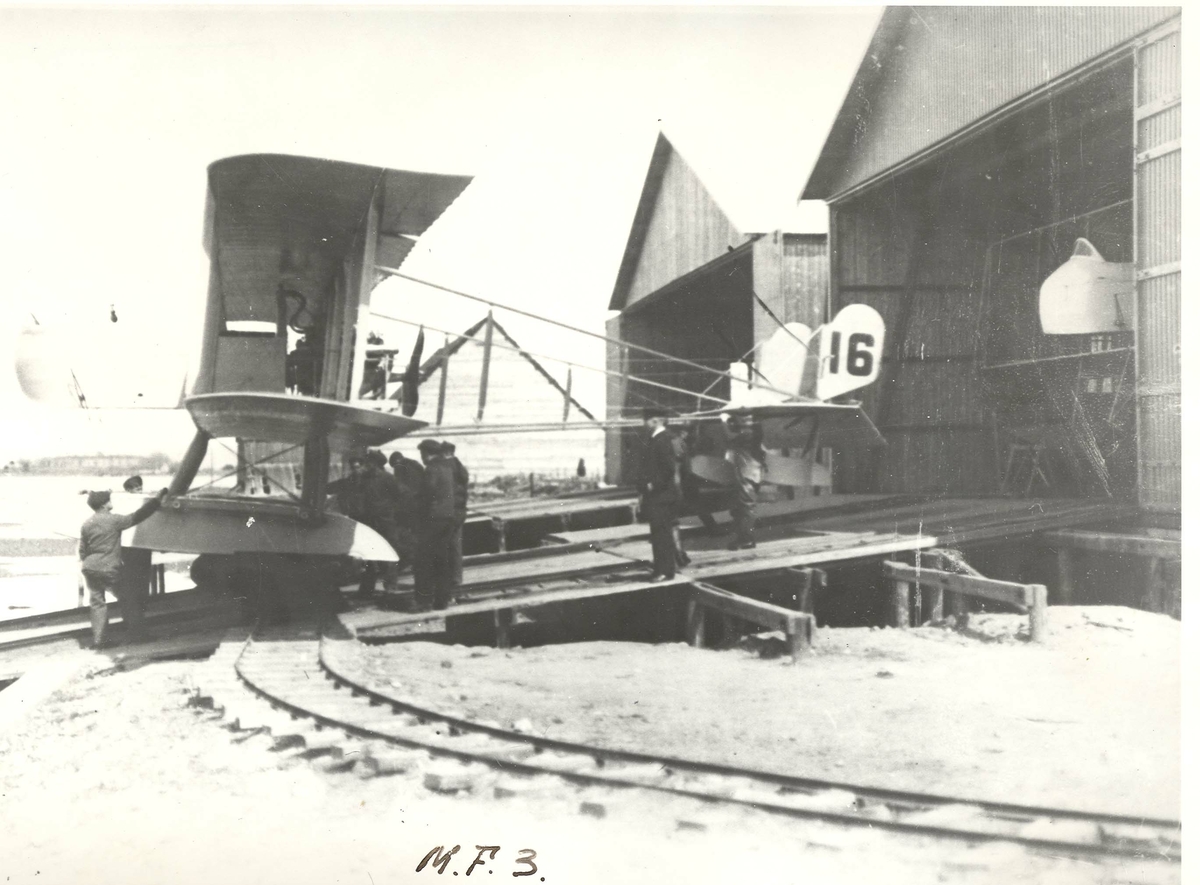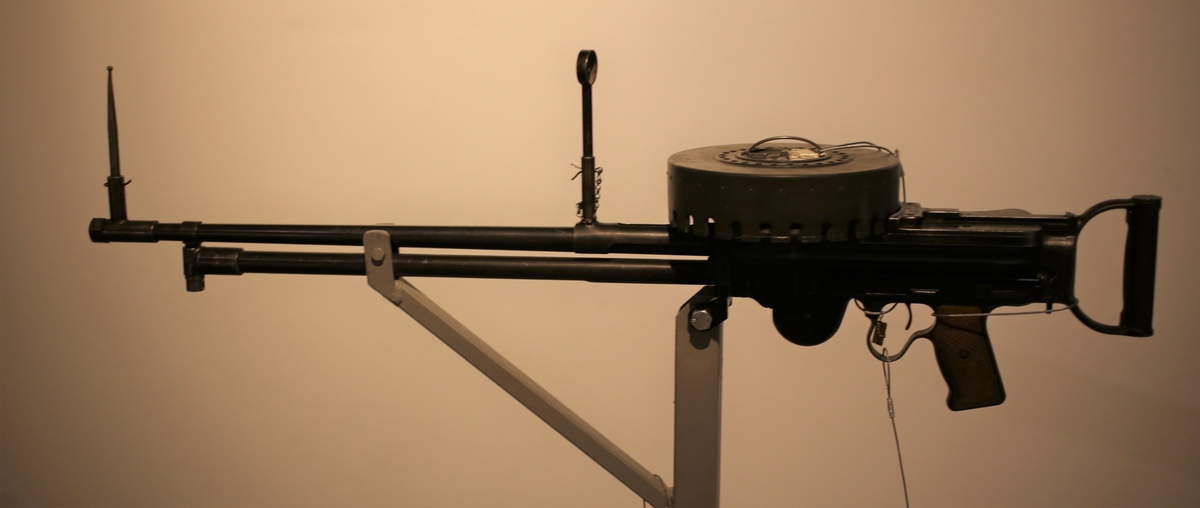
TYPE: Two seat reconnaissance biplane
AMOUNT BUILT: 4x
BUILDING SITE: Marinens Flyfabrikk, Norway
DESIGNER: Halfdan Gyth Dehl
ARMAMENT
Spoiler
Primary armament
1x .303 Model 1914 British Lewis Machinegun
-Placement: fixed in ring firing, greater mobility of the mg
Designed: 1911
Manufacturer: Birmingham Small Arms Co. Ltd.Savage Arms Co.
Produced: 1913–1942
Mass: 13 kilograms
Length: 1,283 Millimeters
Barrel length: 673 Millimeters
Width: 114 Millimeters
Cartridge: .303 British
Action: Gas-operated long stroke gas piston, rotating open bolt
Rate of fire: 500–600 rounds/min
Muzzle velocity: 744 m/s
Effective firing range: 805 Meters
Maximum firing range: 3,200 Meters
Feed system: 47- or 97-round pan magazine
Secondary armament
-1x 40 Kilogram bomb (optional)
-1x 40 Kilogram Mine (optional)
TECHNICAL DATA
Wingspan: 15.6 Meter
Length: 9.7 Meter
Height: 3.335 Meter
Eigne: 1x Curtiss C-6 6-cylinder water-cooled in-line piston engine
Power: 160–180 HP
Propellers: 4-bladed fixed-pitch wooden pusher propeller
Empty weight: 1,150 kg
Gross weight: 1,500 kg
Crew: 2x
PERFORMANCE
Maximum speed: 125 km/h
Cruise speed: 110 km/h
Range: 660 kilometer
Rate of climb: 1.85 m/s
SERIAL NUMBER,TAIL NUMBER, TIME IN SERVICE & FATE
9 – F.14 11.04.1917 - 10.02.1921 - Discarded 1921
10 - F.16 10.05.1017 - 10.02.1921 - Discarded 1921
12 - F.18 03.07.1917 - 10.02.1921 - Discarded 1921
17 - F.20 04.11.1917 - 02.10.1924 - Discarded 1924
HISTORY
The commander of the Norwegian Marine Air Force, Captain Gyth Dehlie wanted to invest in building up and starting an aircraft industry in Horten, Norway. In 1915, he had the plans for this ready, and had made a number of drawings for aircraft, among them drawings for a scout plane. This gave the newly established aircraft factory the task of building two copies, which were then given the designation “M.F.2”, an abbreviation for “Marinens Flyfabrikk”.
It turned out that the gondola on the M.F.2 aircraft became far too cramped for the crew when the armament and radio center were taken on board. Since the budgets for 1917 allowed for the construction of four reconnaissance aircraft, the Flyvebåtfabrikken started planning a new aircraft type “M.F.3” which had a larger nacelle and was somewhat more robust than the M.F.2. The aircraft was powered by an American-built 160 HP Curtiss motor which proved capable of producing a maximum of 180 HP. This meant that both carrying capacity and speed were somewhat better than expected. In the beginning, the four aircraft received the same armament as the M.F.2, but eventually the Madsen machine gun was replaced by a Lewis Machinegun in ring firing. The plane could also carry a 40 kg mine or bomb.
At this time, the Norwegian Navy consisted largely of torpedo boats, and it was decided to test the use of torpedoes on aircraft. If one removed the radio, machine gun and weight of the mine, the aircraft could lift a 320 kilo torpedo. The floats, however, were braced with crossbars, and the torpedo had to be mounted so low that it lay in the water when the aircraft was at sea. The weight and the low center of gravity also made the flying characteristics somewhat worse. The hit percentage was poor, and one concluded that the aircraft was not suitable for this service
The main difference between the Early Service and Late service are that the Madsen Machinegun were removed and replaced by a .303 M/14 Lewis machinegun, in addition to be mounted otherwise, this time on a “ring mount” same way as a turret, just in the front of the plane (the 2nd seat is located in the very front of the nose).
IN GAME
I don’t know how this would work in the game, could happen if you get more from from this time/ww1 then it would be better. Time will tell, if not it could be a suggestion for the future. The changes to the mounting of the MG of the late version could change performance, for better or worse
ILLUSTRATION
coming soon - technical issues with IMGBB
ALBUM
Spoiler
coming soon - technical issues with IMGBB
SOURCES
Spoiler
https://www.norli.no/boker/dokumentar-og-fakta/historie-og-dokumentar/krig-og-historie/luftforsvarets-historie-fortalt-gjennom-75-gjenstander?
https://www.adlibris.com/no/bok/norske-militarfly-9788271286873?
Norsk marinehistorie : modeller som forteller - detaljert visning - Biblioteksøk
Not the best: Marinens Flyvebaatfabrikk M.F.3 – Wikipedia
- Yes
- No
